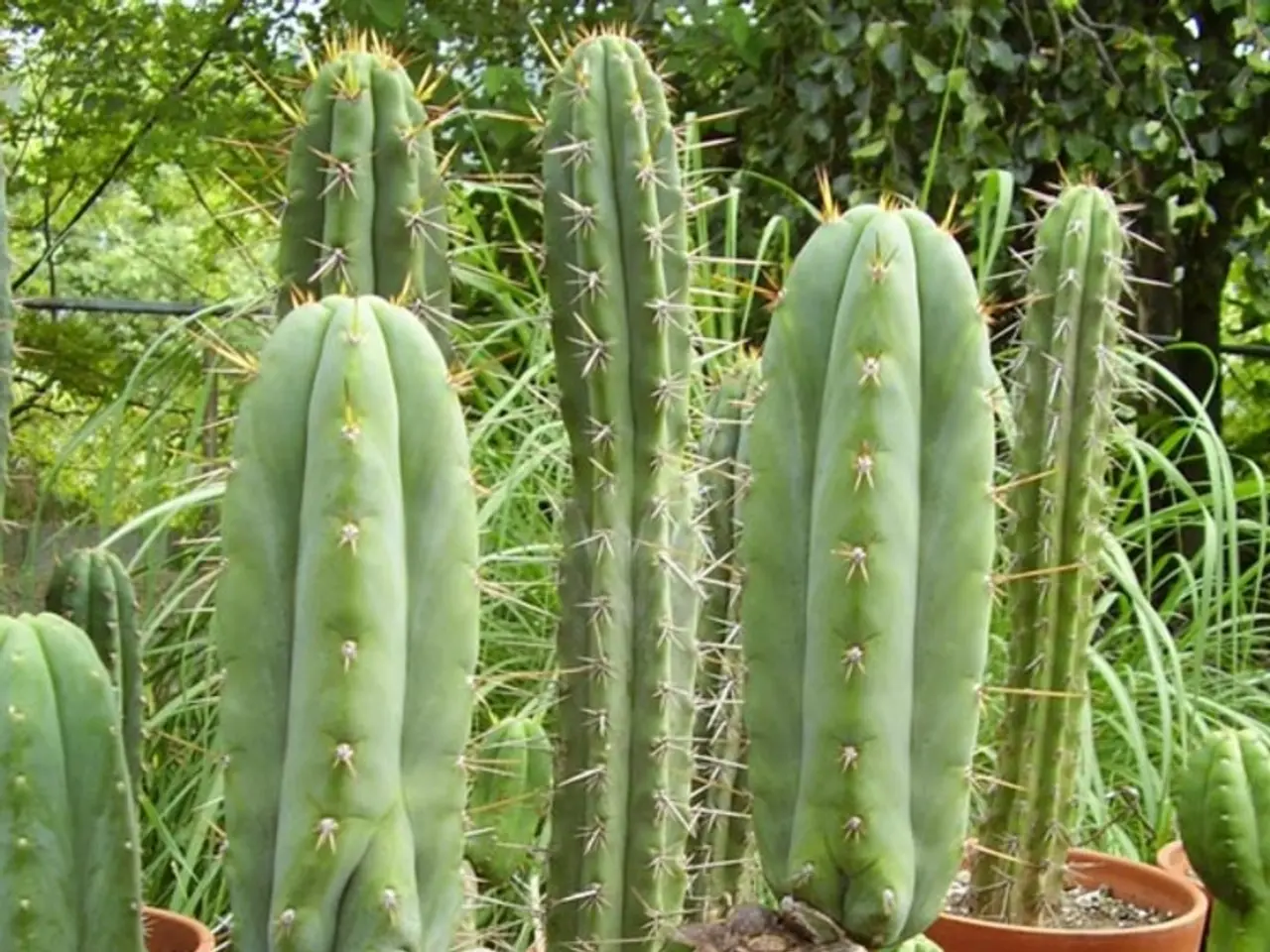Guide to Cacti Maintenance
In the world of cacti and succulents, proper potting, soil selection, and handling are crucial for maintaining healthy growth. Here's a guide to help you get started.
Pot Size
When choosing a pot for your cactus or succulent, opt for a size that is proportionate to the plant's current size. Small to medium pots, ranging from about 2.5 inches (x-small) up to 6 inches, are typically suitable for growing these plants. Ensure the pot has drainage holes to prevent waterlogging and root rot.
Soil
A well-draining soil mix is essential for cacti and succulents. This can be achieved by using a combination of potting soil, sand, perlite, or other porous materials. Commercial mixes like Miracle-Gro Cactus Palm and Citrus Potting Mix are suitable options. Well-draining soil prevents root rot by allowing water to pass through quickly.
Handling Spiny Plants
When handling cacti and other spiny succulents, it's important to use protective gloves or specialized tools to avoid injury. Prune dead or damaged parts carefully to maintain the plant's shape without harming yourself.
Additional Tips
- Water infrequently and deeply, allowing soil to dry out fully between waterings.
- Place plants in bright, direct light for optimal growth.
- Reduce watering during cooler months to prevent overwatering damage.
Repotting
When repotting, remove some of the soil around the root ball and prune the roots if they look overgrown. To remove a plant from a pot, tap the pot gently on a hard surface, wriggle the plant out, or use a knife to gently slip it around the inside of the pot. Fill all the spaces between the plant and the pot with potting medium. Use sufficient drainage material in the bottom of the pot.
Choosing the Right Pot
Cactus and succulent plants require a pot that is small enough to fit the plant. The pot should be slightly larger than the root ball for succulents. If the pot is clay, give it several sharp, controlled blows to break it without damaging the plant. If the pot is plastic, cut it away.
Placement
The plant should be centered unless it's the kind that likes to travel in a horizontal direction, in which case it should be put at one edge. Leave space between the top of the medium and the top of the pot so you will have room for water.
Soil Types
"Light" soil is open-textured material with excellent drainage that can be kept moist but never wet. "Organic" soil is rich in humus, leaf mold, or some other organic material. Coarse builder's sand or perlite will improve the drainage. "Heavy" soil is made of good garden soil, clay, or loam with about one-third humus and should contain about one-third washed builder's sand or perlite for good drainage.
Handling Spiny Plants (Alternative Method)
To handle spiny plants, use a newspaper folded into a narrow band as a harness. This method is more effective than gloves for handling spiny plants.
By following these practices, you can maintain healthy growth while protecting both plant and caretaker. Happy gardening!
[1] Source: The Spruce, Caring for Cacti and Succulents [2] Source: Gardening Know How, Cactus Soil Mix [3] Source: The University of Arizona's College of Agriculture and Life Sciences, Cactus & Succulent Care [4] Source: The Royal Horticultural Society, Cacti and Succulents [5] Source: The Old Farmer's Almanac, Caring for Cacti and Succulents
- To create an appealing space, consider incorporating cacti and succulents into your home-and-garden lifestyle. These plants not only thrive in various pot sizes, from x-small to 6 inches, but also benefit from a well-draining soil mix.
- For a flourishing garden, treat your cacti and succulents with suitable pot sizes and well-draining soil, while ensuring proper handling to maintain both your plants' health and your safety during gardening.




